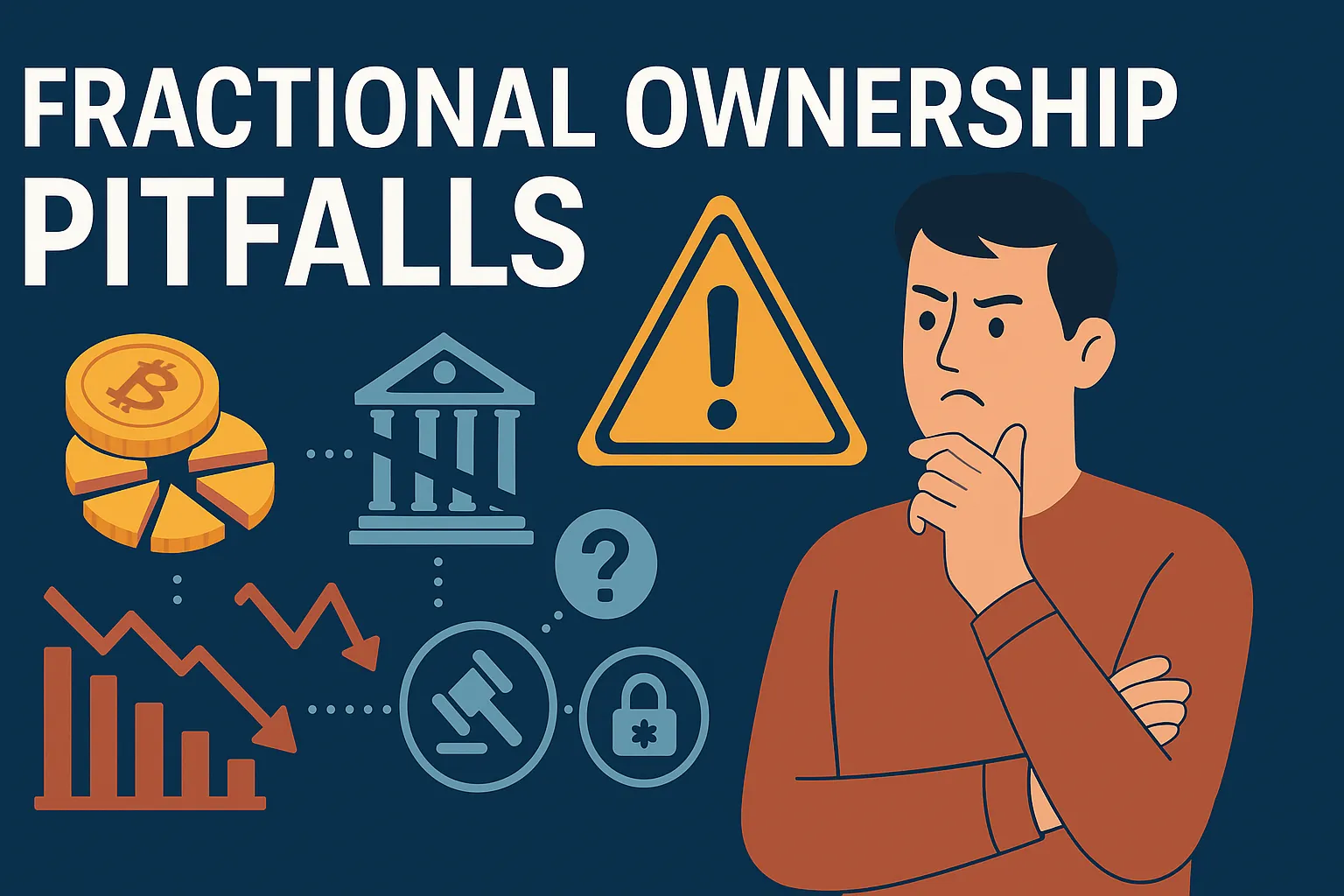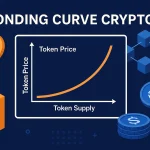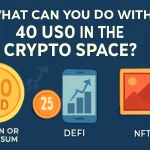Fractional Ownership Pitfalls: Crypto Risks Explained
The Hidden Snags of Fractional Ownership Every Crypto Native Should Know
Fractionalising a property—breaking it into salable pieces—sounds like economic democracy in action. Either a tokenised Manhattan loft apartment or a limited NFT from the Chromie Squiggle collection, the spiel is the same: own a part, get discovered, gain liquidity. But unwary buyers who enter unprepared find the trip wires in a hurry. Let’s review those traps before they leap.
Liquidity Isn’t Guaranteed
Envision a Uniswap pool of shards of a $10 million townhouse. Launch volume is nice because marketing dollars, airdrops, and holder enthusiasm contribute to the order book. Three months later: trading is stagnant, LPs withdraw money, and your “liquid” token is a specter. Bid ask spreads widen, slippage skyrockets, and you’re selling at a discount bigger than the management fee you were attempting to avoid.
Rule of thumb: if the 24 hour volume isn’t at least 1 % of market cap, you’re skating on thin ice.
Governance Deadlocks
Fractional platforms often hand token holders voting rights over maintenance costs, rental strategy, or when to sell the underlying asset. Sounds democratic until participation sinks below quorum levels. I’ve watched a fractional NFT DAO argue for weeks about whether to refinance a vaulted Fidenza print—meanwhile, insurance premiums lapsed because no wallet address felt like signing the transaction.
Before buying, look at past Snapshot proposals. If voting is stuck below 15 % of supply, think about governance gridlock baked in.
Regulatory Grey Zones
SEC’s 2023 smackdown of Impact Theory firmly placed fractional NFTs directly in the crosshairs of securities. Tokenized property is even more clouded: various states treat all shards as securities, others point to the DAO holding the building as issuer. Fines are from mandatory KYC to being delisted from the major exchanges—both evaporating liquidity overnight.
Employ a two step sanity check
1. Jurisdiction fit – Is the issuer located where token laws are well established (e.g., Liechtenstein’s TVTG)?
2. Compliance roadmap – Have they done Reg A+, MiCAR, or are they faking it with “utility token” speech?
Oracle & Pricing Glitches
Six-month review may reassure lawyers, but it kills AMM pools re-setting price each block. Stale feeds attract arbitrage bots sucking dry reserves and compensating passive holders.
Projects that integrate on chain feeds (e.g., Chainlink) with off chain valuation updates handle all of this better. Without oracle documentation, rough price discovery is to be expected.
Valuation Illusion
Dashboards will show implied value: last trade price × total supply. Marginal trades overestimate in value of contract in low volume markets. A shard of CryptoPunk might sell for 120 ETH, but selling 10 % of supply can crash the book to 80 ETH in minutes.
Ask for depth-discount valuations or do it yourself by estimating a 5 % market sell on Dune. Surprises later.
Tax Headaches
Tokenising property cash flows appears neat until you factor in that every rent payment is taxable income whether or not you possessed fiat. Some holders build liabilities which only manifest themselves come year’s end when the accountant makes his announcement.
Pro tips:
• Choose platforms that distribute Form 1099 DIV (or equivalent).
• Use a wallet tag in Koinly or CoinTracking and import automatically instead of digging through Etherscan exports in April.
Security & Smart‑Contract Risk
Fractionalisation wrappers manage ERC 20 share tokens, ERC 721 custody contracts, and DAO modules. An unstuck delegatecall can evaporate the vault. The 2024 ReNFT exploit was a frightening wake-up call: one misconfigured owner() check opened the collateral; shards dropped 93 % before a white hat rescue.
Audit badges help, but nothing beats open source code and a live bug bounty. No bounty? Red flag.
Exit Friction
Proceeds distribution on sale of underlying asset should be simple; in practice, lawyers, notaries, and DAO voting introduce weeks of drag. Markets move within that timeframe. In 2022 a tokenised Swiss chalet sold 12 % under fair value because ETH crashed on close.
Read the liquidation flow chart. If you don’t have one, expect hurt on exit.
Quick Scorecard & Key Takeaways
| Pitfall | Personal Red‑Flag Threshold |
|---|---|
| 24‑h volume < 1 % of cap | Liquidity risk high |
| Voting turnout < 15 % | Expect governance stalemates |
| No compliant filing + US marketing | Likely SEC target |
| Oracle update > 24 h | Arbitrage magnet |
| Audit older than 1 year | Security debt building |
Fractional ownership increases access at the cost of other failure modes. Crunch numbers, read reports, and check on chain metrics before you fall in love with the idea of owning “just 0.1 %” of something shiny. A cheap slice isn’t a bargain if you can’t sell—and worse, if regulators classify it as an unregistered security after you’ve bought the dip.
🖊️ Feeling uncertain? Fire up a Dune query, skim the governance forum, and message the devs. The extra hour often saves a fortune.
FAQ
What is the most frequent newbie error with fractional NFTs?
They believe liquidity is permanent. Early trading demand can mask the reality that shards are untrades once the airdrop hype wears off.
How can I confirm if a fractional project will be delisted?
Monitor exchange notices and monitor the project filings for conformity. When the issuer distributes to U.S. persons without an exemption, delisting risk is present.
Are fractional real estate tokens good value versus REIT shares?
They provide greater transparency and faster settlement at times but carry smart contract and governance risks that REITs do not.
Do I need to pay taxes if my fractional token is more valuable but I don’t sell?
Capital gains tax typically only apply at disposal, but rental distribution income can incur tax liabilities without selling.
What on chain metrics signal a looming liquidity squeeze?
Watch 24 hour volume to market cap, LP withdrawals, and widening bid ask spreads—especially after marketing campaigns lapse.
Post created by Robert AI Team




